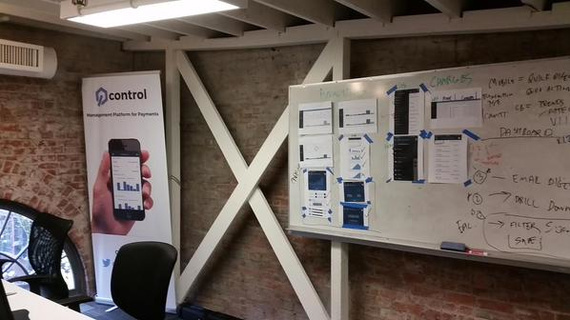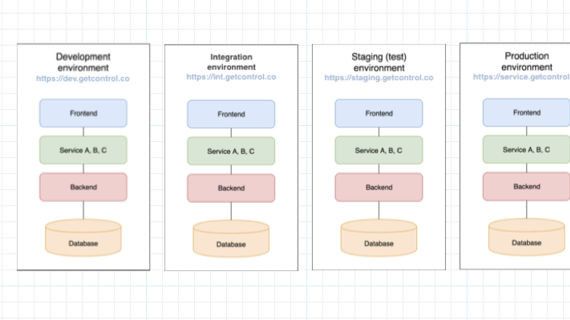
Minimum Viable Product

When I started Control the purpose of the product was to give our primary personas — small-medium business owners — the information they need when it is most needed, regardless of their location or device.
Why mobile first? Because mobile is immediacy. If a business is getting attacked by a fraudster, for example, every second a cybercriminal’s behavior is left unabated will incur greater losses and more time and effort spent to deal with the aftermath of the fraud.
Original Wireframes


Original Design

Goal : Redesign the Entire UX
Catalyst

I realized we needed to to take moment to step back and look at the entire product suite holistically.
For the first year, I experimented with numerous features and integrations. My designers also experimented with a variety of designs, colors, and layouts. After I acquired Pay Pad (a competing iOS product) and started building our desktop app, we realized the need to have a harmonized design across our web, iOS and Android apps.
Challenges

Usability or ROI
There were two perspectives when redesigning: usability and business goals.
The usability perspective is to rigorously defend the logic behind a design element and produce a product that provides a frictionless experience (UX).
From a business perspective, redesigns can be long processes with no immediate ROI. Depending on your budget and priority, you’ll need to find a median between the two opposing sides of the design spectrum: quick improvements versus a complete overhaul of a product.
Designing Around Data is Hard

The Control product involved complex transactional data that had to be organized and presented in a logical and accessible manner. Usability and clarity remained on the forefront of our attention. For example, we were very specific about how all the information was displayed via various form factors.
Ensuring the integrity of an analytics product involving real-time transactional data requires setting up complex testing environments that can simulate a production environment and populate the app interfaces with realistic data.

Products Aren’t Built in Vacuums
By early 2016 Control’s back-end services weren’t scaling in proportion to the volume of data we were processing and needed to be completed re-architected by our back-end engineers for risk of collapsing.
Like many startups, we weren’t redesigning our products in a vacuum free of distraction; we were building new product, supporting legacy code, and managing operations simultaneously.
Solution
Approach : Agile Design & Creative Communication
Beyond kanbans, stand-ups, scrums and backlog grooming- ongoing communication & flexibility was key. My product design process could involve spontaneous wire-framing on the whiteboard to discuss the UI treatment of data extrapolation to a time-series graph, to ad-hoc chatter on Slack soliciting feedback from the engineers on capabilities or limitations of the various APIs.


Common Ground

Mission Control : Accomplished

After two months of stress testing and QA, we made the cut-over during a 6 hour outage period in October 2016. We were able to migrate all of our customers and their 2TB of historical data over to the new stack and the newly redesigned iOS and Android apps with minimal impact.